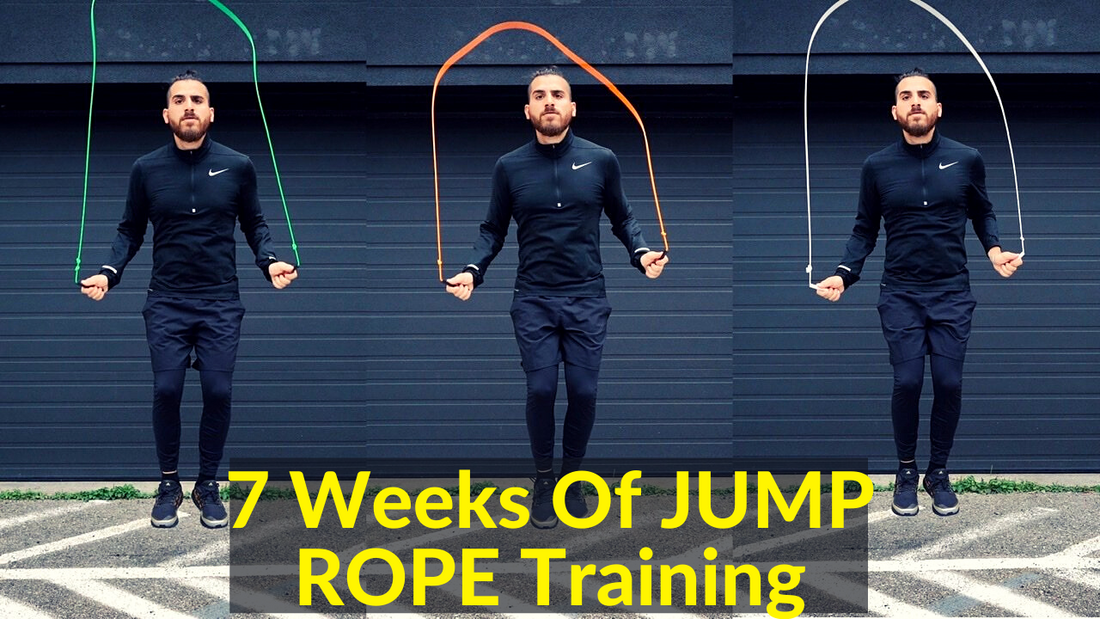
Effect Of 7 Weeks Of Jump Rope Training
7 weeks of jump rope training The effects of regular exercise on adults have been studied well in the past, but the impact of regular physical activity on children's health has not been studied well. According to the work of Janssen and LeBlanc, adolescence belonging to the age group of 5 to 17 years should increase their daily physical activity time by 30 minutes. The workout should include the exercise of moderate to vigorous intensity. Majority of the aerobics exercise belongs to the above two categories.
Skipping rope is a popular anaerobic exercise used as a endurance and cardio training by boxers and different athletes. The kids also play it as a recreational activity. Rope jumping involves the muscles of arms and legs, improving metabolism and cardiovascular functions. Recently, these exercises were added to the exercise program of middle schools.
The advantage 7 WEEKS OF JUMP ROPE TRAINING has over other exercises is that the equipment required for them is highly portable and easy to carry. Previous studies have proven that jumping ropes significantly improve cardiovascular endurance, balance, strength, body composition, and flexibility.
The recent study conducted by Chao-Chien and Yi-Chun revealed that twelve weeks of rope jumping exercise increases cardiovascular strength in people with intellectual impairment. Also, Kim studied showed that six weeks of rope jumping increases the insulin sensitivity of adipocytes and decreases triglycerides levels that help in weight loss. Although most of the studies have been conducted on kids with intellectual impairment nowadays, few studies are being undertaken on healthy middle school students. Thus, the purpose of this study is to show the effects of 7 WEEKS OF JUMP ROPE TRAINING on speed, cardiovascular endurance, agility among adolescent boys.
Methodology of the research
Subjects
A total of 28 middle school students were recruited randomly and divided into two groups of fourteen students. One group would serve as a control group, and the other was assigned rope jump training. The students' average height, age, and weight were 1.49m, 11.87 years, and 40.30 kg, respectively. The students belonging to the control group were doing the usual regular workout at school. Subjects in the training group were performing jump-rope exercises in addition to the traditional workout at school.
The school authorities approved the study protocol, including the director, teacher committee council, and the parent committee council. Informed consent was taken by the parents allowing the student to participate in the study.
Duration of the study
The study was conducted between 19th January 2021 and 14th march 2021 three times a week. The subject belonging to the exercise group were administered rope jumping exercises every Sunday, Monday, and Wednesday from 15:30 to 16:45.
Endurance, speed, agility was measured before and after seven weeks of exercise in both groups. The height of both the groups was measured to the nearest millimeter, and a digital scale also measured body weight with a sensitivity of 0.1kg. After this, the BMI of each subject was also calculated.
Physical fitness test
Measurement of Cardiorespiratory endurance
Cardiorespiratory endurance was measured by a 540m run test on a rectangular outdoor volleyball court. The dimensions of the court are 18X9 m. After doing warm-up, participants start running around the court. The time taken to cover the 540 m distance is recorded in a minute: the second format. Subjects run ten times around the volleyball court. After the test, the subject should walk for 3-5 mins to cool down.
50-m sprint test
The 50-m sprint test was also done to assess the anaerobic capacity of the body. Five trials were given to each participant to familiarise themselves with the sprint test. A 2-minute recovery time was given in between attempts, and each sprint started with a 5-second countdown.
Test for agility
For agility and conditioning testing, 30-yard T-drill is used. In this test, the subject sprints for 5-yards from the start line to the marked point, and then he sides shuffles to the right for 5 yards. After reaching the extreme right, the subject side shuffles to the outer left corner for 10 yards. In the end, he returns by shuffling back to the marked point.

Statistical Analysis
All the obtained data were analyzed using SPSS 16.0. Independent t-students and dependent t-students were used to compare the data obtained before and after the training sessions. All the data are presented in mean SD.
Results obtained after seven weeks
There was no significant difference found in the body weight, BMI, 50-m sprint test, T-test body mass between the rope jump training and control group. There was a slight improvement seen in the training group when it comes to the 50-m sprint test. However, a substantial increase in cardiovascular endurance (by 10.33%) and agility (by 3.17%) was observed in the training group.
Conclusion of the Study
This study's main aim was to assess whether 7 WEEKS OF JUMP ROPE TRAINING and similar exercise increases cardiovascular endurance, agility, and speed among healthy adolescent boys going to middle school. This study's main findings are that a 7-week jumping rope training program for 15-50 min/day and three days/week significantly improves cardiovascular endurance and agility in healthy adolescent boys.
These findings go hand-in-hand with the previous works of Chao-Chien and Yi-Chun. They demonstrated that a 12-week jumping rope training significantly increased muscle strength, flexibility, endurance, and strength among adolescents with intellectual impairments. These findings are also consistent with other studies that concluded that rope jumping exercises improve balance, body composition, and flexibility. The study also revealed a minor improvement by 0.29% in speed performance measured by the 50-m sprint test. However, the information on the correlation between speed and rope jump training is minimal.
The improvement of the above parameters is that this exercise includes multiple joint movements and coordination. In addition to the above benefits, 7 WEEKS OF JUMP ROPE TRAINING promotes fat breakdown, expression of lymphocytes, better gene expression, promotes lean mass formation.
In conclusion, 7 WEEKS OF JUMP ROPE TRAINING is a feasible and safe method to increase the agility, speed and cardiovascular endurance in middle school adolescent boys.
References
Partavi, S. (2013). “Effects of 7 Weeks of Rope-Jump Training on Cardiovascular Endurance, Speed, and Agility in Middle School Student Boys.” Sports Science, 6(2), 40-43.
Prev post

Home Jump Rope Workout
Updated on 09 December 2024
Next post

What Are The Benefits Of Jump Rope Workout?
Updated on 09 December 2024




